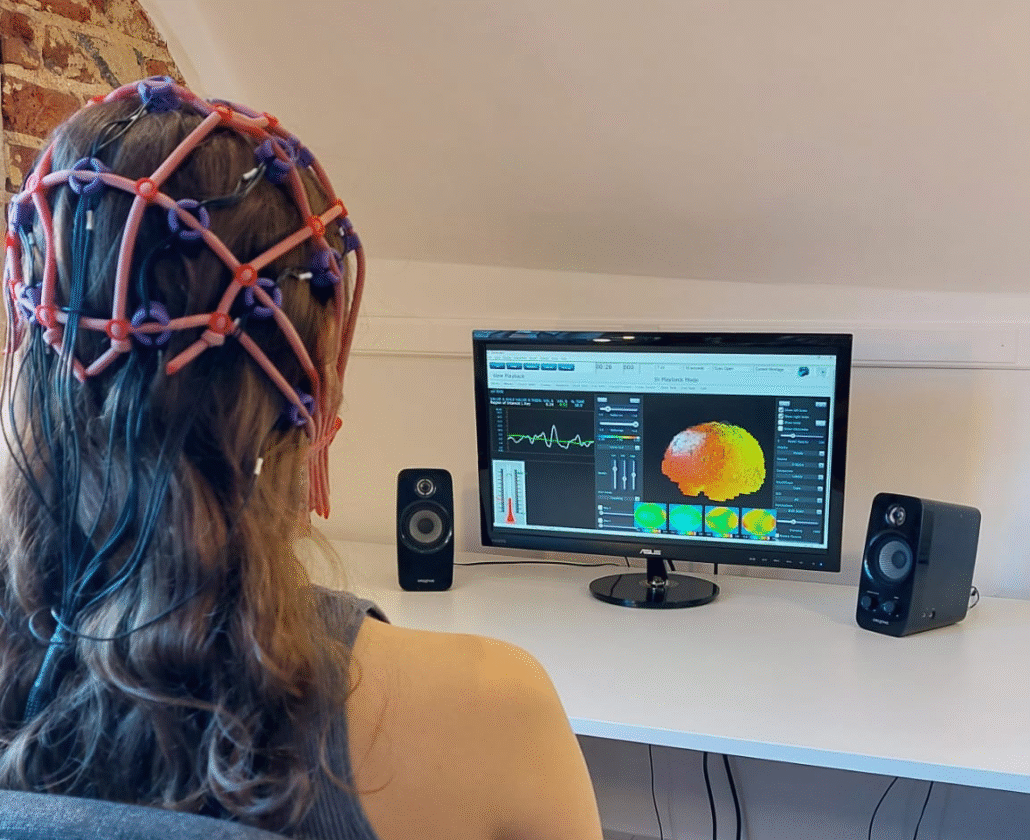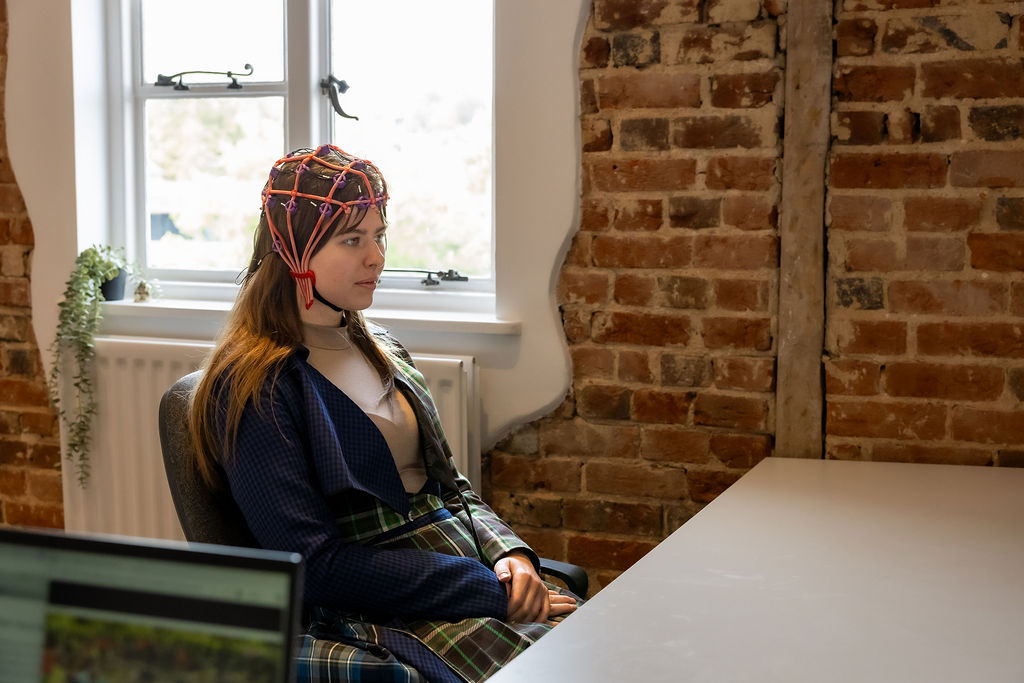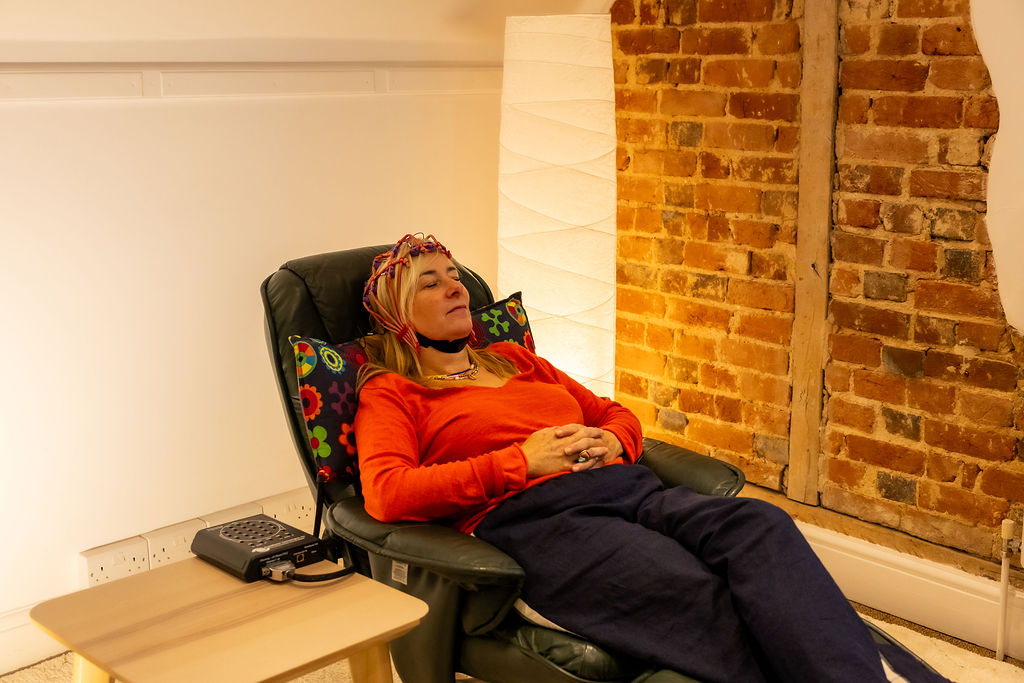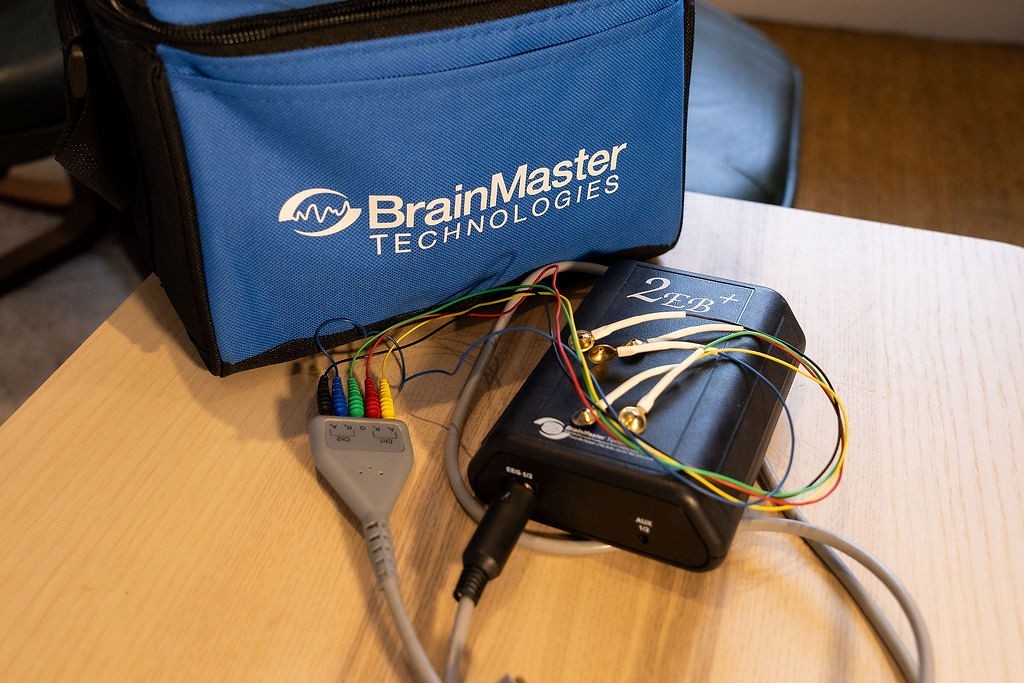Helping conditions
including anxiety, depression, trauma and attention disorders
How neurofeedback training works
Neurotherapy, also known as neurofeedback training or EEG biofeedback, is a non-invasive treatment that aims to regulate brain activity and improve mental health and cognitive functioning. It works by monitoring brainwave patterns using sensors placed on the scalp. These sensors record electrical activity in real time, which is then displayed on a computer screen for analysis.
The core principle of neurotherapy is operant conditioning. Patients receive immediate feedback—visual or auditory—when their brain produces desired patterns of activity. Over repeated sessions, this feedback trains the brain to self-regulate, promoting healthier patterns of function. For example, someone with ADHD might learn to reduce theta waves (associated with daydreaming) and increase beta waves (linked to focus and alertness).
What we treat
Our neurofeedback training programmes are designed to enhance mood, focus, motivation and energy levels.
Anxiety
ADHD
Trauma
Addictions
Stress
Depression
Sleep disorder
Meet the Therapist Margaret Appleton GMBPsS
I have over 15 years of clinical experience in neurofeedback training and neurotherapy. Originally from a corporate environment, I retrained in psychology after my three children were diagnosed with various brain-based disorders, including ADHD and dyslexia. I found that qEEG brain mapping offered a more precise and insightful assessment of their underlying issues, and neurofeedback provided a method for training specific dysregulated neural pathways.
From a personal point of view, neurofeedback has helped me enormously. It’s not just something I use in my clinical practice—it’s something I’ve experienced firsthand. Through the training, I noticed improvements in my own focus, stress levels, and overall mental clarity. It’s been a powerful tool for self-regulation and resilience, and that personal experience continues to deepen my understanding and passion for the work I do with clients.
Training Sessions
Neurofeedback sessions are typically carried out in the Marlow office. These sessions are carried out with either eyes open or closed and normally last just under one hour. The number of sessions required varies for different clients. Typically clients notice a positive difference after just one session. Subsequent training sessions are used to reinforce or tailor the training. I’ts recommended to try an initial course of 10 sessions but the number of sessions required, depends on individual experience and response to the training.
Home visits may be an option for some clients. We also offer remote home training with a neurofeedback amplifier available for rental.
"I noticed the change in my son after the first session, he described the feeling as being free. He also said that he felt less heavy and could see clearer. My son became chatty and certainly appeared more confident in everything.It has made such a difference I would definitely recommend" "I had struggled with depression for years but after NFB treatment with Margaret, I have never been depressed since.I was treated for mood disorder and I feel been better months after treatment. I can usually tell the difference the minute I get in the car as I actually get joy from listening to music. My body feels different and better." "After one session I just felt happier, calmer, not as anxious or worried about problems"
Case studies
Typical case studies illustrate different approaches applied for different presenting symptoms.
They give an idea of the variation in number of sessions required and the application of different types of neurofeedback.
Ellie
Problems with emotional regulation.
Ben
I.T. professional struggling with emotional regulation.
Kim
Survivor of childhood trauma with chronic anxiety.
